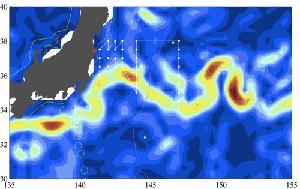April 2012 Our proposal for a special issue of Biogeosciences (BG) has been approved. For those who were at our Fukushima workshop in Salt Lake City, this should not be a surprise, but for others who were not there, our goal is to bring together in one journal a wide range of papers on Fukushima ocean studies. Key features of BG are the rapid online access to the initial paper, a rolling deadline for submittal, a public comment period with peer review (managed by 4 guest editors), and publication online as articles are approved. Biogeosciences has an innovative two-stage publication process, which involves a scientific discussion forum and exploits the full potential of the internet to:
In the first stage of the process, papers that pass a rapid access review by one of the editors are immediately published on the Biogeosciences Discussions (BGD) website. They are then subject to interactive public discussion, during which the referees' comments (anonymous or attributed), additional short comments by other members of the scientific community (attributed), and the authors' replies are also published in BGD. In the second stage, the peer-review process is completed and, if accepted, the final revised papers are published in BG. To ensure publication precedence for authors, and to provide a lasting record of scientific discussion, BGD and BG are both ISSN-registered, permanently archived and fully citable. http://www.biogeosciences.net/home.html More details are available here, including a very tentative list of possible authors/titles for papers that we've heard about; you can find below basic information about the issue. I'd appreciate hearing back from you if you want to add your name to that list, and although that is not mandatory, it will help with planning. I look forward to seeing an exciting set of papers come together, and would appreciate your spreading the word. I expect in a few weeks this special issue will be announced on the BG web site and more broadly to others, but feel free to pass along this email to anyone you think might be interested. Cheers, Ken Title of Special IssueImpacts of the Fukushima Nuclear Power Plant Discharges on the Ocean Opening date: June 1, 2012 Closing date: Oct. 1, 2012 Guest Editors Ken Buesseler Woods Hole Oceanographic Institution Woods Hole, MA USA Michio Aoyama Meteorological Research Institute Tsukuba, Japan Pavel Povinec Comenius University Bratislava, Slovakia Hartmut Nies (pending IAEA approval) Environment Laboratories, International Atomic Energy Agency Mondaco Biogeosciences Staff Editor Minhan Dai Xiamen University State Key Laboratory of Marine Environmental Science 12/05/2011: Date and time of special session on Fukushima at The Ocean Science conference in Salt Lake City released. More information in the sidebar, below right. 12/01/2011: CTD, bottle and event log from R/V KOK are now available via the WHOI BCO-DMO through the links in the sidebar. Last updated: May 29, 2012 | |||||||||||||||||||||||||||
Copyright ©2007 Woods Hole Oceanographic Institution, All Rights Reserved, Privacy Policy. | |||||||||||||||||||||||||||

